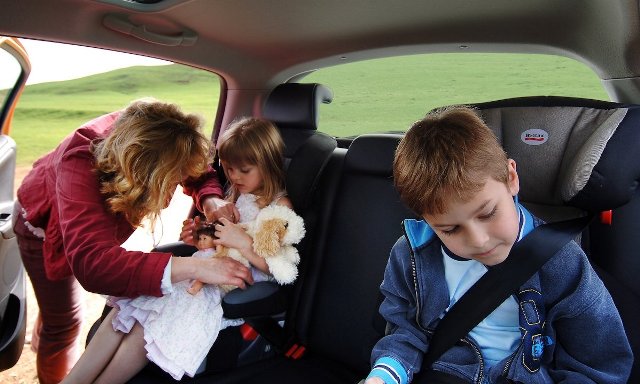Travelling Safely With Your Child
When you have children your priorities suddenly change and from this point on you have to be completely responsible for someone else's life. A small child relies on you completely for its protection and welfare. A child's safety is particularly important when travelling. It is the drivers' responsibility to ensure that all passengers are properly strapped into the car, especially children until they can be taught to strap themselves in.
Child Seats And Other Protective Measures
Every year around 30 children between the ages of 0 and 11 are killed in car accidents, 450 are seriously injured and another 8,000 are slightly injured. Many of these children could have been spared from injury if they had been properly restrained in the car they were travelling in. For example in a crash at 30 mph where a child is unrestrained they would be thrown forwards with a force of between 30 and 60 times their own body weight. There is no substitute for a proper child seat that is fitted according to the manufacturers' guidelines.
Holding a child without restraint is dangerous as it would be impossible to hold on tight enough to them in the event of an accident.
A car seat is the only really safe way to transport your child in the car. There are different seats you can buy according to the size and weight of the child. You must buy a seat that is appropriate and get advice on fitting it in your car. Not all car seats fit in all cars so you should check with the retailer before you buy, that your seat is suitable for your car.
To help you buy the right seat for your child we've put together a list of hints and tips to follow when buying your child's car seat.
Tips for buying a car seat
- First of all you should make sure that every car seat you consider meets the United Nations standard Regulation 44.03 and carries the 'E' mark that verifies this.
- Look at the range of options available. Manufacturers have websites that list details of their car seats and also lots of information on safety and helpful user guides. Here is a list of some of the leading car seat manufacturers.
- When you are buying a car seat for a newborn baby there are two options available to you. You can either buy a rearward facing seat which is suitable until your child weighs about 10/13 kg. These are often supplied with buggies and can be lifted in and out of the car. You can also buy a two-way seat which faces inwards for about the first year and then outwards until the child is around 150 cm tall. If you go for the rearward facing seat you will need to buy another seat for the child when it grows and possibly a booster seat in between for a child that weighs 15 - 25 kg.
- Not all car seats fit all cars so find out which ones are suitable for your vehicle and then follow the instructions very carefully.
- The car seat should be light and comfortable to carry. This will make it easier for you to take your baby in and out of the car.
- It seat should be well padded for the child's comfort and have good head support as a small baby cannot support its own head.
- You should never put a rearward facing car seat on a seat where there is an active airbag because if the airbag inflates in an accident it could kill your baby. Many cars allow you to disable the passenger airbag.
- Never buy a second hand car seat as like motorcycle helmets you cannot see all damage that may have been sustained in a previous accident.
- Make sure the seat doesn't wobble about at all and feels very secure, you could check this every time you put the baby into the seat.
- Check the seat for wear and tear and for any harnesses that may be twisted.
All new car seats will have to meet the International Standards Organisation FIX (ISOFIX). This is a new standard for fitting car seats and lots of new cars will have to have ISOFIX fitting points which will enable the seat to be literally plugged into ISOFIX points in the car. This will make fitting car seats much safer and much more straightforward. Studies have shown that many car seats are not fitted properly so this will mean that children will be much safer in the future.
Car accidents happen all the time so it is better to be safe than sorry. Make sure that your child's seat is fitted correctly and that your child still fits the seat, this will help prevent injury in the event of a road traffic accident. If you are involved in a car accident that was not your fault and you or your child are injured then you may be able to make a personal injury claim.

Comments
Post a Comment